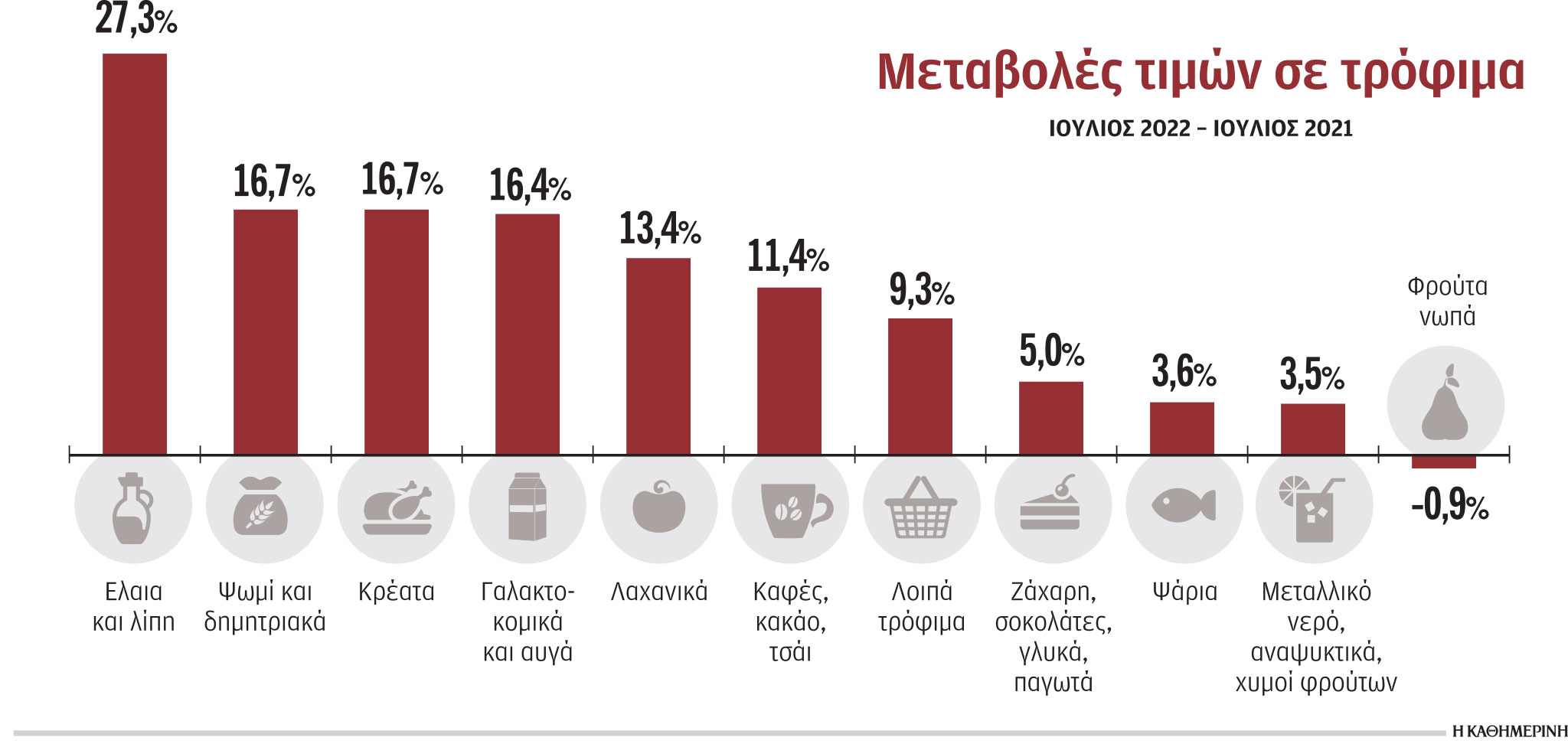
Until the middle of last year, the dairy industry mainly paid attention to the cost of the main raw material they use, that is, the price of milk. The price, which began to rise from the end of August 2021 and now reaches from 38 cents per liter to about 50 cents per liter today, that is, by 31%. What they didn’t look at until last fall, but since then, probably with fear, is… the Dutch center of TFT and gas prices. This is because the very large increase in the price of natural gas, which is largely used by the Greek industry, means a sharp increase in production costs.
What does the above mean? Fresh milk, the main type of our daily diet, reaches our glass by 15.11% more than in July last year, while the overall category of dairy products – eggs has risen in price by 16.4% (data from ELSTAT). The fact that, despite a rise in producer prices of more than 30% and a rise in natural gas prices of more than two times, we do not see a corresponding increase in retail prices for milk, of course, does not mean that the industries are … charitable. The entire increase in production costs is never transferred to the retail price, and in any case not all at once, since the struggle for shares, especially during a period of reduced consumption, is merciless. The rise in prices is happening in stages, so even if prices for all the critical cost factors of production fall sharply tomorrow morning, food prices will continue to rise for a long time to come. Fresh milk prices rose in just one month by 3% in July compared to June, while headline food inflation was much higher at 13% compared to headline inflation of 11.6%.

“The electricity bill at the Sparta plant has grown from 25,000 euros to 90,000 euros. Two months later, the subsidy was granted and it was reduced by 40,000 euros,” Creta Farms owner Dimitris Vintzilaios told Kathimerini at the end of June. He essentially described the price hikes the company has made so far (cumulatively 8%) as “decorative” given rising energy costs and other production factors.
Compared to July last year, our glass receives fresh milk by 15.11%, and bread by 16.7%.
For their part, millers and bakers have been watching soft wheat prices with horror since the war began in Ukraine. Despite the de-escalation that took place in relation to March and April, the price of soft wheat, which is the main raw material for bread, has increased by about 75% compared to last summer. In previous months, bakers received more than twice as many energy bills for the same consumption due to the famous adjustment clause. The price of bread increased by 16.7%, and if in 2001, when Greece was still on the drachma, you would have said that you would have paid almost a thousand for a kilogram of village bread, and if it was sourdough, then you would probably have been would look at them as if they came from the planet Mars.
The domino effect caused by the energy crisis, combined with factors such as the side effects of the pandemic on transport and adverse weather conditions that have affected crops in some countries, is affecting all food, whether it be milk and bread, cold cuts and legumes. or for soft drinks and beer. 3alpha, which has a leading market share in the pulses market, revalued for the first time this year, something the company did not do during the decade-long financial crisis or until recently. The main supplier of glass bottles, which supplies almost all soft drink companies and breweries operating in Greece (BA Glass), has raised prices by 70% since the beginning of the year, with price adjustments occurring monthly. Most soft drink companies have raised prices by 6-8%. As for the cost of energy, what is typical is what the Athenian Brewery reports in its 2021 financial report, during which energy alone increased costs by 1 million euros.
In terms of production costs, in addition to energy, large food and beverage groups can store primary and secondary materials. This is what Coca-Cola 3E does, for example by signing long-term contracts. However, what does he estimate will be the increase in cost of goods sold throughout 2022? from 15% to 20%. Anything but contempt.
Source: Kathimerini
Lori Barajas is an accomplished journalist, known for her insightful and thought-provoking writing on economy. She currently works as a writer at 247 news reel. With a passion for understanding the economy, Lori’s writing delves deep into the financial issues that matter most, providing readers with a unique perspective on current events.